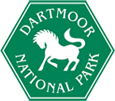Veteran Trees
The old gnarled veteran trees found around the moor are special features of the Dartmoor landscape. These often neglected trees are an important part of our heritage, have been around for many hundreds of years and are a direct link with our past. The trees are special not just because of their age but for their rarity. Britain is considered to have the largest and best array of ancient trees in north-western Europe.
Veteran trees can be found in many places but mostly where there is evidence of long human activity such as along old field boundaries, ancient deer parks, wood pasture, wooded commons, village greens and old churchyards.
Wildlife
Veteran trees are important for wildlife. Older trees support lichens and the rarer lichens are often found on the bark of ancient trees. The holes, hollows and splits found in older trees are used for nesting birds and roosting bats. Many different insects survive in crevices in the bark and their lava feed on the decaying wood. Fungi are closely associated with old trees and veteran trees can support many species.
Historical Management
Many of the old trees have been worked in the past, before coal became freely available wood was an important source of fuel and many trees were pollarded on a regular basis. Pollarding is the regular cutting back of branches and foliage to the main trunk above the height of grazing animals. After being cut back the tree will put out new shoots and these new shoots are left to grow until they are of a suitable size when they will be cut again. Pollarding can considerably extend the life of a tree.
In woodlands and in hedgerows trees would be coppiced. Coppicing is the regular cutting of trees to ground level. The cutting does not kill the trees and the trees put out new shoots after cutting. These new shoots would be cut again when they have reached a useful size. This coppicing process means that many trees may look young, but may be many hundreds of years old.
Old coppiced trees have large multiple stems and are often found growing on old hedgebanks.
Tradition
Some veteran trees in the centre of villages on Dartmoor are ‘dancing trees’. Dancing trees were considered to be sacred and revered by the local villagers, they were the focal points of fairs and dances were held around their base. In Moretonhampstead dancing was said to have taken place on the crown of the tree. Sabin Baring Gould records a journal of a resident of Moretonhampstead in the 1880s who described the dancing tree as an elm with a clipped flat top, surrounded by poles with a platform built into the canopy. On the top chairs and tables were set and feasting took place. Unfortunately, the tree became dangerous and had to be felled.
Traditions involving veteran trees continue on Dartmoor. Old trees are retained as parish boundary markers and once a year parish residents will beat the bounds and visit these ancient marker trees to show the younger residents the boundary of the parish.
Some ancient trees on Dartmoor
The most famous ancient tree on Dartmoor is the Meavy Oak standing on the village green. In the early 1900s the tree was propped to stop it falling over. Over time the crown has been reduced and the props removed. The tree is hollow and is difficult to date exactly, but estimating its age from the stem measurement suggests the tree is over 950 years old.
Managing ancient trees
Trees need to be looked after, but over-management of our old trees can be detrimental to their long term health. Poor pruning cuts can lead to increased decay and extensive crown reduction can reduce the vitality of the tree. In most cases the best form of management for a veteran tree is to leave it alone.
